Windows 11 is a substantial update to the Microsoft operating system, providing a number of new features to enhance the user experience. As technology advances, recognizing and exploring these characteristics becomes increasingly important for optimal efficiency and enjoyment in everyday computing. You should check out some awesome new features. The best Windows 11 tips and tricks are listed here.
Table of Contents
1. Move The Start Button
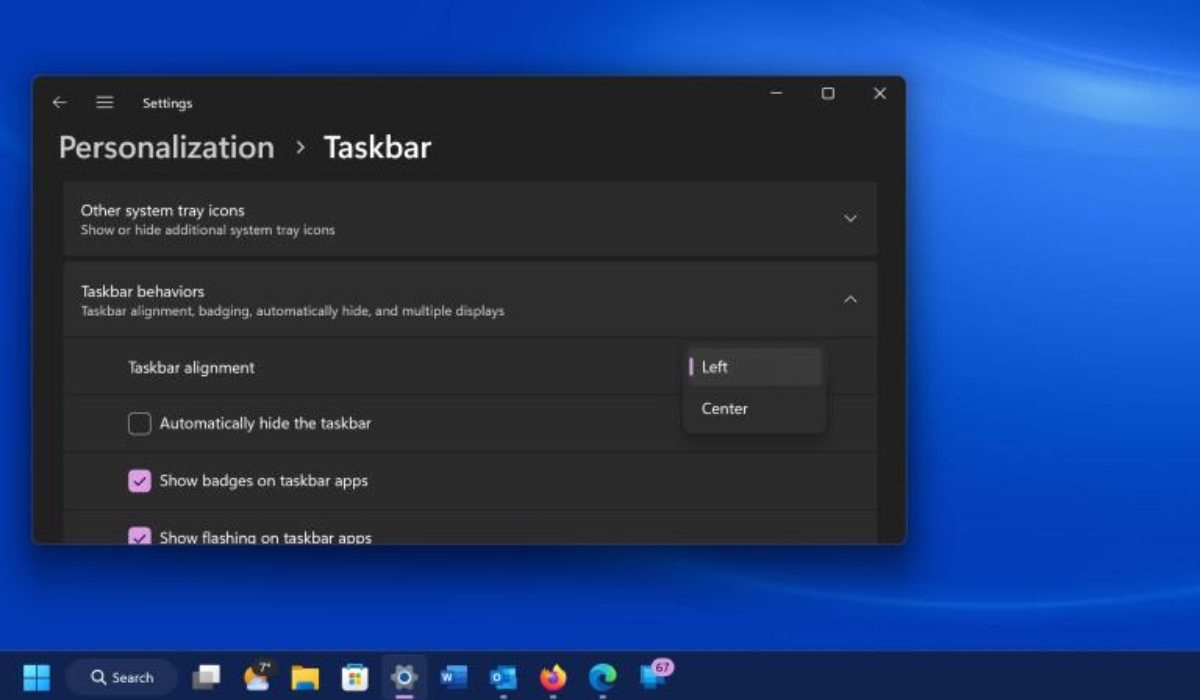
(Credit: Microsoft)
A Start Menu that can be customized according to personal preferences, is available in Windows 11. Users can rearrange the menu for easy access, pin their favorite apps, and change the layout.
Simply right-click on the taskbar and open Taskbar Settings. Click on the Taskbar behaviors section to expand it, then choose Left from the drop-down menu of Taskbar alignment.
2. Add More Options To Your Right-Click Menu
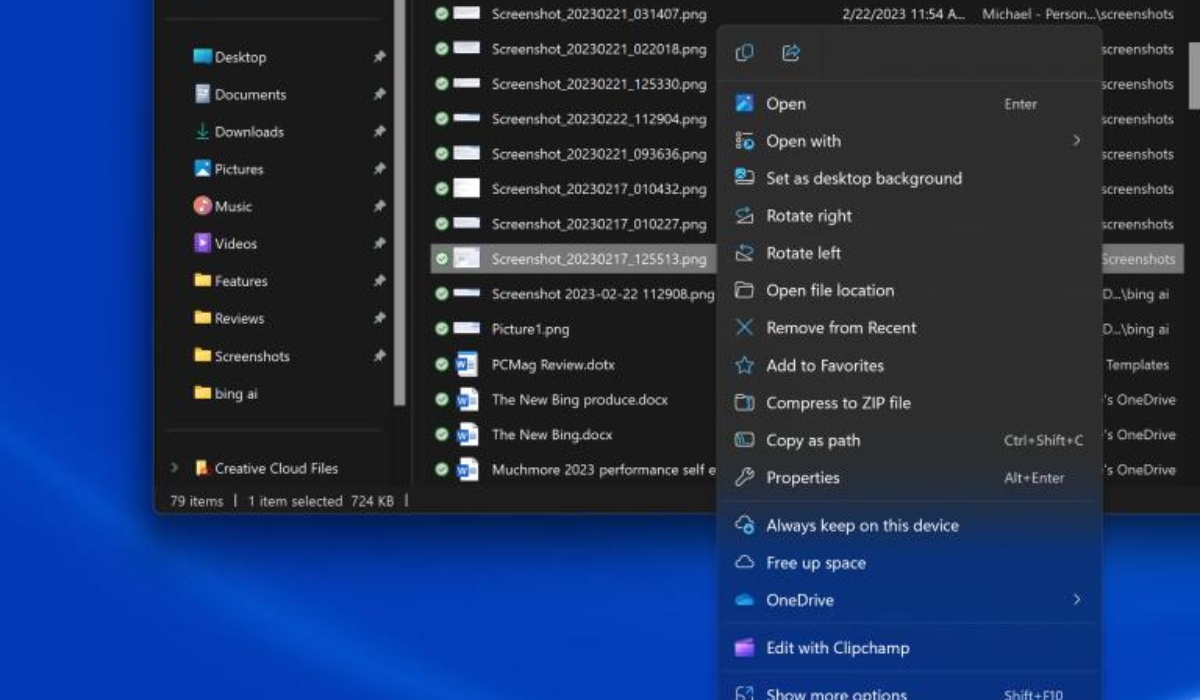
(Credit: Microsoft)
The right-click menu now focuses only on the most important settings. If you need additional settings, select Show more options to open the overflow menu.
3. Use Snap Layouts

Windows 11 brings enhancements to the Snap and Resize feature compared to its predecessor. With Snap Layouts, you can easily create flexible window arrangements on your screen. You can quickly select your preferred layout and move applications to desired positions, aiding in focused work without distractions. If desired, you can disable this feature in Settings and utilize keyboard shortcuts for rapid window snapping. With numerous options and flexibility, Windows 11’s Snap feature proves to be a convenient solution when dealing with multiple applications and windows on the screen. To enable Snap Assist on Windows 11, press the Windows + Z, choose the suitable layout and size.
4. Turn On The Dark Mode If You Want
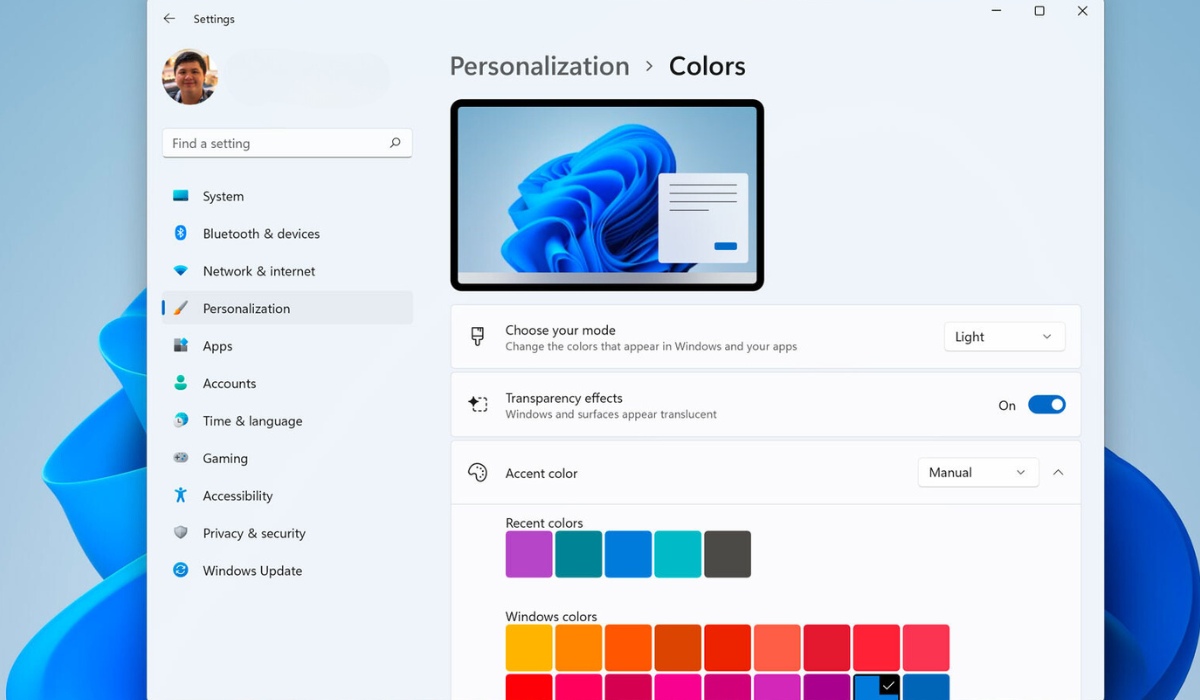
The ability to change the application’s color to something darker is a popular feature, and Windows 11 is no exception. To access the Color section, first right-click on an empty area of the desktop and choose Personalize, if you want darker tones. Choose Dark from the drop-down menu labeled “Choose your mode.”
5. Pinning Often-Used Applications
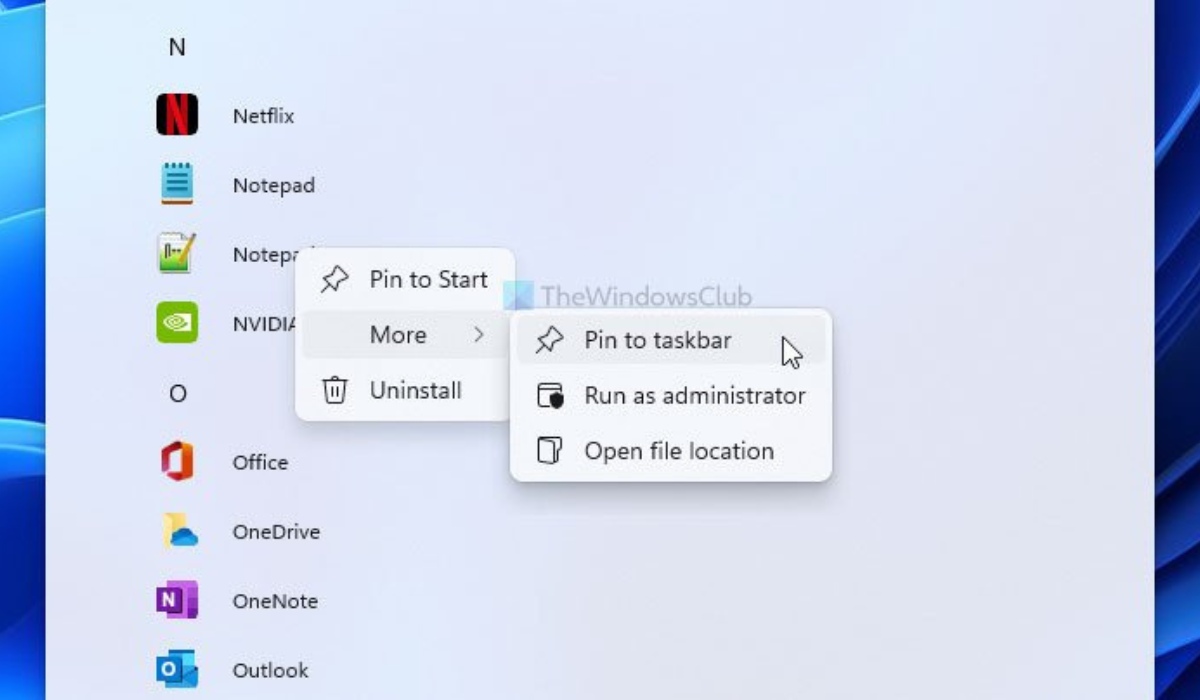
You can easily access your most frequently used programs by pinning them to the taskbar or the top of the Start menu. To launch a frequently used app, click the Start button, find its shortcut, and then right-click it. You may choose to Pin to Taskbar or Pin to Start from the options that display; the choice is yours.
6. Quick Settings Panel
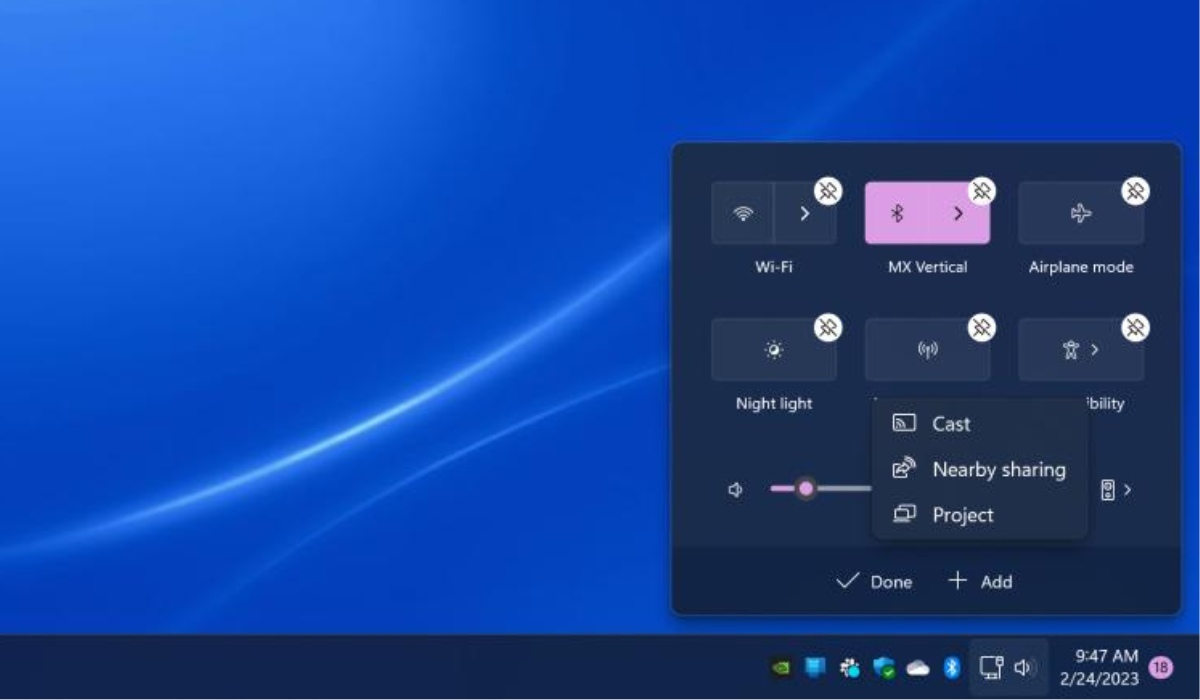
(Credit: Microsoft)
Click on the Network/Volume/Power button on the taskbar, and you will see Quick Settings that allow easy access to various options and settings. To add or remove quick settings buttons, click on the Edit quick settings button with a pencil icon. Then click on the ‘unpin’ button for what you don’t want or click Add to provide new features that can be accessed from the Quick Settings menu.
7. Gather Your Widgets
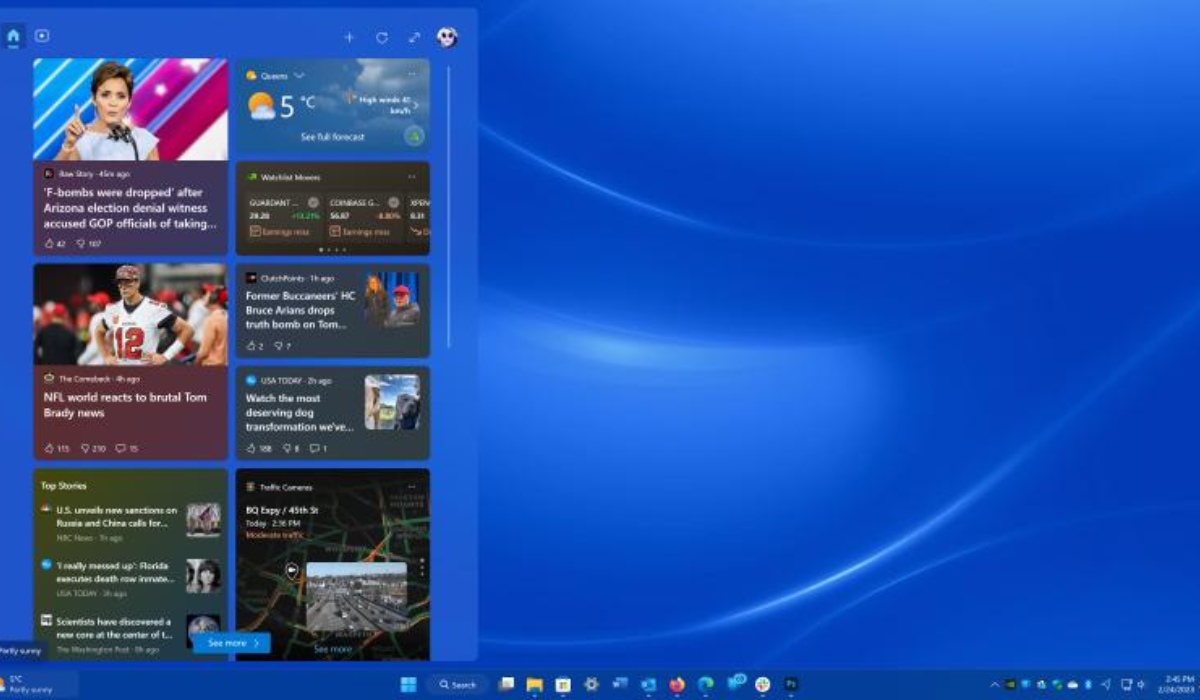
(Credit: Microsoft)
If you want to update the weather, check sports scores, track stock prices, or even remove unnecessary tasks from your daily list, do so through the new Widget icon on the taskbar.
You can customize the widgets to meet your specific needs, arrange them conveniently on the page, and manage options through the Microsoft News app. In recent previews of Windows 11, third-party widgets appear in the control panel, including features from Spotify and Facebook Messenger, and they will soon be available in the upcoming update.
8. Deselect Unwanted Taskbar Buttons
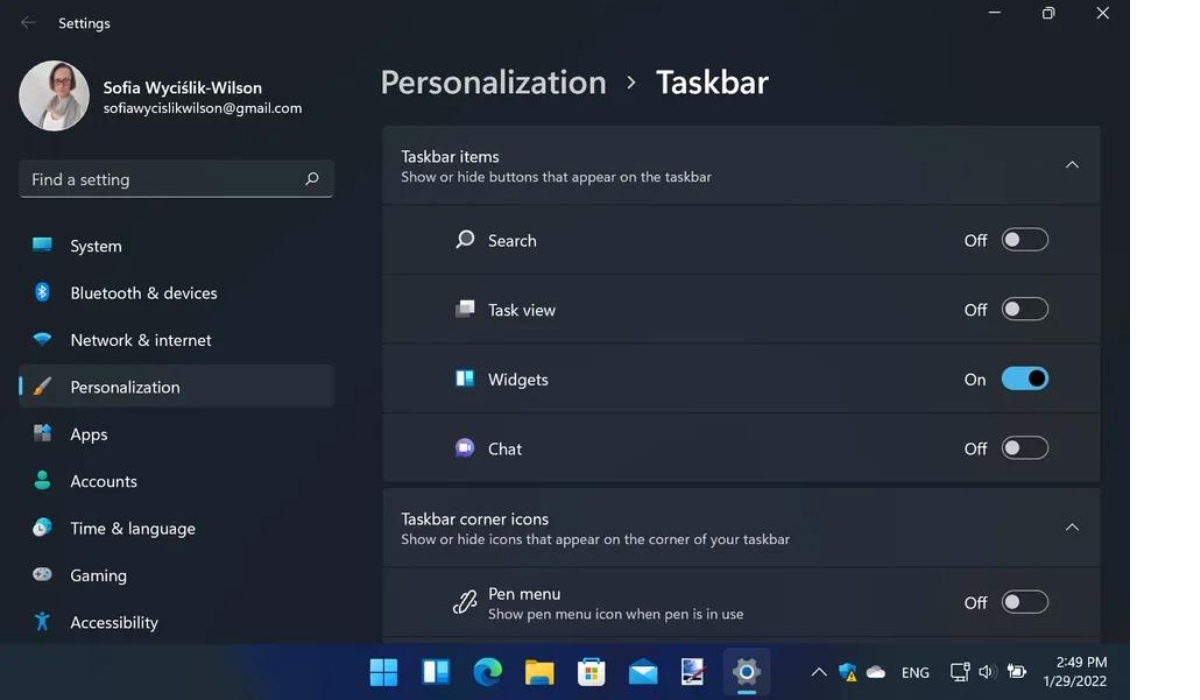
(Credit: Future)
In addition to the Start button, you’ll also find the Task View and Widgets buttons. If you don’t need them, you can hide them by right-clicking in the empty area on the taskbar and selecting Taskbar Settings. From there, you can enable or disable Task View and System Tray as desired. Similarly, you can do this with the Search and Chat buttons.
9. Chat With Teams
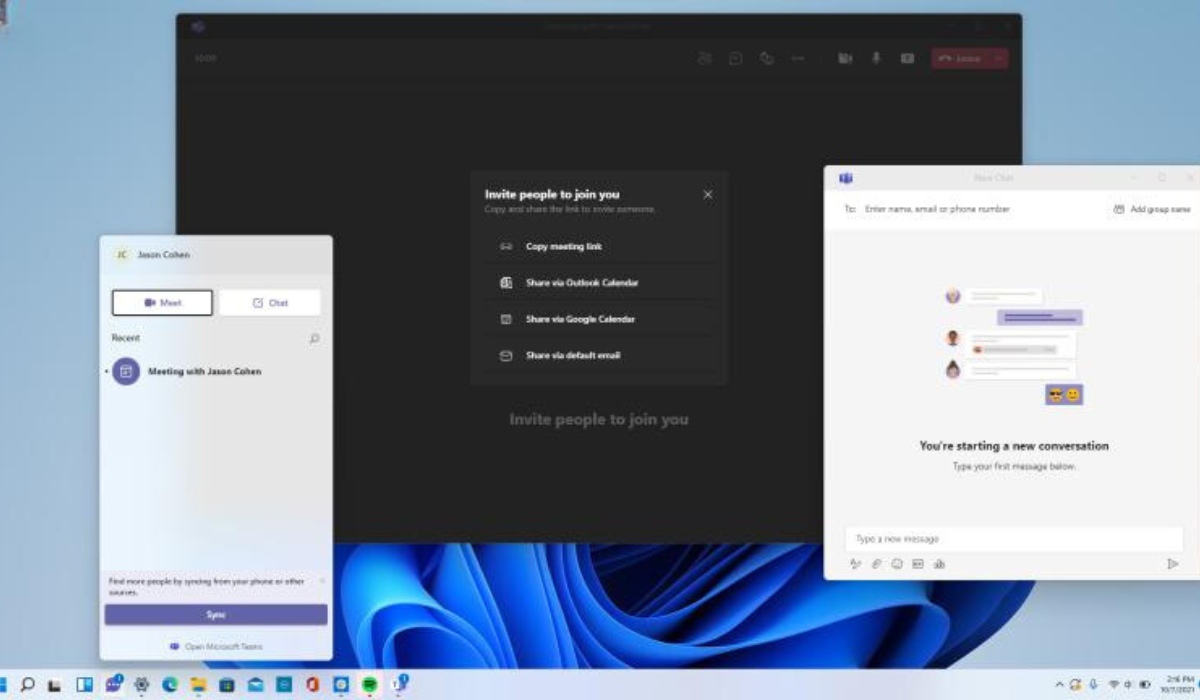
(Credit: Microsoft)
The Microsoft Teams application, a free messaging, calling, and video conferencing tool by Microsoft, is seamlessly integrated into Windows 11. You can initiate video calls and start conversations without opening the Microsoft Teams app, simply by clicking on the new Chat icon on the taskbar. To synchronize your contacts, you can use the Teams mobile app. If your contacts do not use Teams, you can still invite them to join via email or text messages. Moreover, you can engage in text conversations via SMS with contacts, even if they are not registered on Teams, and they can join video calls through a web link.
10. The Feature Of Focus Assist

The Focus Assist feature allows you to block notifications when you want to minimize distractions and concentrate on your work. To use it, open Settings, select the System section, and then choose Focus Assist. If you select ‘Alarms only,’ only notifications related to alarms will appear, avoiding any disruptions. You can also use the ‘Priority only’ option to choose other notifications that need to be displayed and set the time for when the Focus Assist function will automatically activate.
11. The Feature Focus Sessions

With a constant stream of messages and video chats throughout the workday, the potential for distraction is significant. Focus Session in Windows 11 is designed to encourage you to allocate time for tasks that require deep concentration without interruptions. This feature is available in the new Alarms & Clock app and provides a quick way for you to have at least 30 minutes of uninterrupted work. If you work for more than 45 minutes, the app will automatically schedule a 5-minute break in the middle of your work session. How to use: Open the Alarms & Clock app, select ‘Start,’ choose the duration for your minimum Focus Session of 30 minutes. Then, customize the settings and begin your work.
12. Use Virtual Desktops

On Windows 11, Virtual Desktop is a feature that allows you to organize your applications systematically, addressing limitations when using only one computer screen but wanting to manage multiple separate tasks. Fundamentally, the Virtual Desktop feature is not new. However, on Windows 11, Microsoft decided to rename it, and despite the new design changes, the feature still functions similarly to previous Windows versions. To use it, you need to click on the Task View button (Windows + Ctrl + D) and then click the plus sign for ‘New desktop.
13. Exclude Edge from Alt + Tab
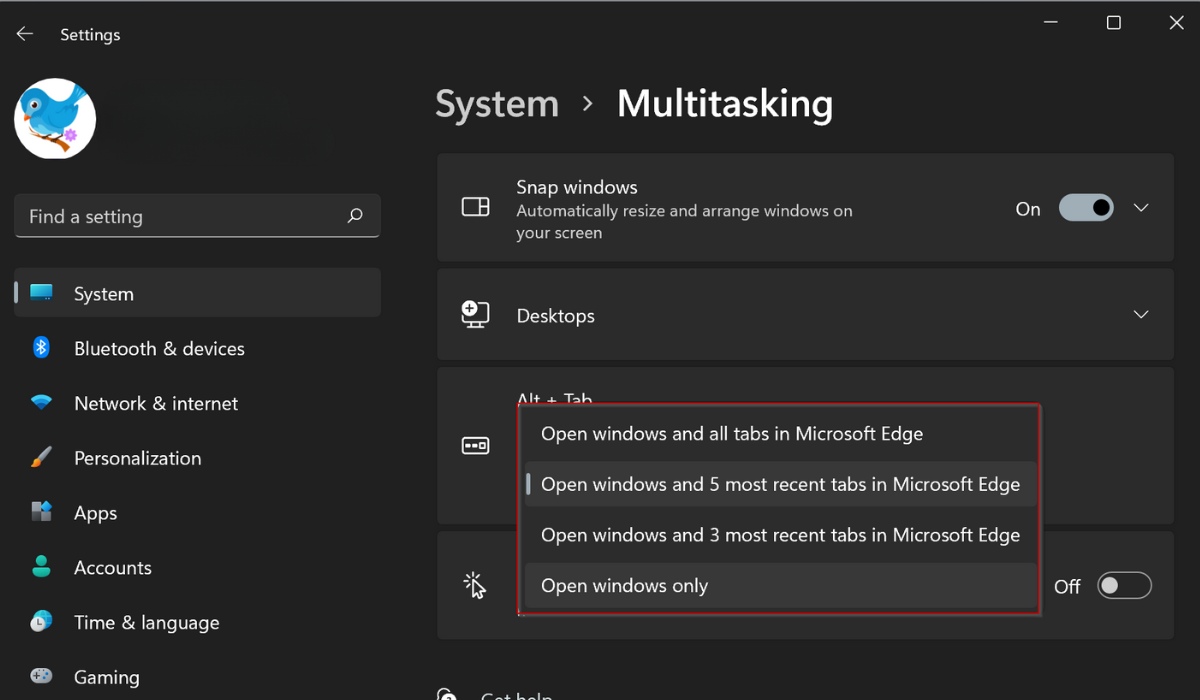
You might be familiar with using the Alt + Tab shortcut to switch between open applications and windows. In Windows 11, you also have the ability to add Edge browser tabs to the Alt + Tab list for easy navigation. To do this, open Settings and navigate to System > Multitasking. Then, use the drop-down menu in the Alt + Tab section to select the “Open windows only” option, which will exclude Edge tabs when switching between applications.
14. Add Tabs to File Explorer

(Credit: Microsoft)
In the Windows 11 22H2 update, a notable addition is the introduction of tabs to File Explorer, similar to what Finder on macOS has had for many years. Tabs assist in managing your screen more efficiently, eliminating the need to open multiple File Explorer windows when viewing multiple content simultaneously. Simply right-click on a folder and select “Open in new tab,” akin to using a web browser.
In the initial release of Windows 11, Microsoft has thoughtfully organized the File Explorer menu. Functions like Cut, Copy, Paste, Rename, Share, Delete, Sort, and View are placed prominently at the top with highlighted buttons, providing convenient access without navigating through rarely used menus. Windows 11 also introduces a “New” button for creating folders, new shortcuts, and documents based on the installed programs. The displayed buttons will dynamically change based on the context, for example, when using the search box on the right, you will see the “Search options” button.
15. Pair Input/Output Devices

Windows 11 provides a fully-featured Sound menu, allowing you to flexibly connect new input and output devices. To do this, you can open Settings, then select System and click on the Sound tab. In the Output section, you can click on Add device to connect external speakers or other devices. Alternatively, if you want to connect an external microphone, click on Add device in the Input section.
Next, you can choose to connect via Bluetooth, wireless dock, and other means. If you want to view a comprehensive list of all input and output devices connected to your PC, scroll down to the Advanced section and click on All sound devices.
16. Audio Control

Whether you’re using speakers or headphones, Windows 11 provides the ability to control audio output with options such as Mono sound and Spatial sound. To activate Mono sound, you can open Settings, then choose System and select Sound. Here, you turn on Mono sound mode to combine the left and right audio channels.
For Spatial sound, which includes enhancing bass, virtual surround sound, room correction, and volume leveling, you can click on All sound devices in the Advanced section of the Sound menu. Choose a device to access the Properties menu and enable the Enhancements feature for advanced audio settings.
17. Customize The Start Menu
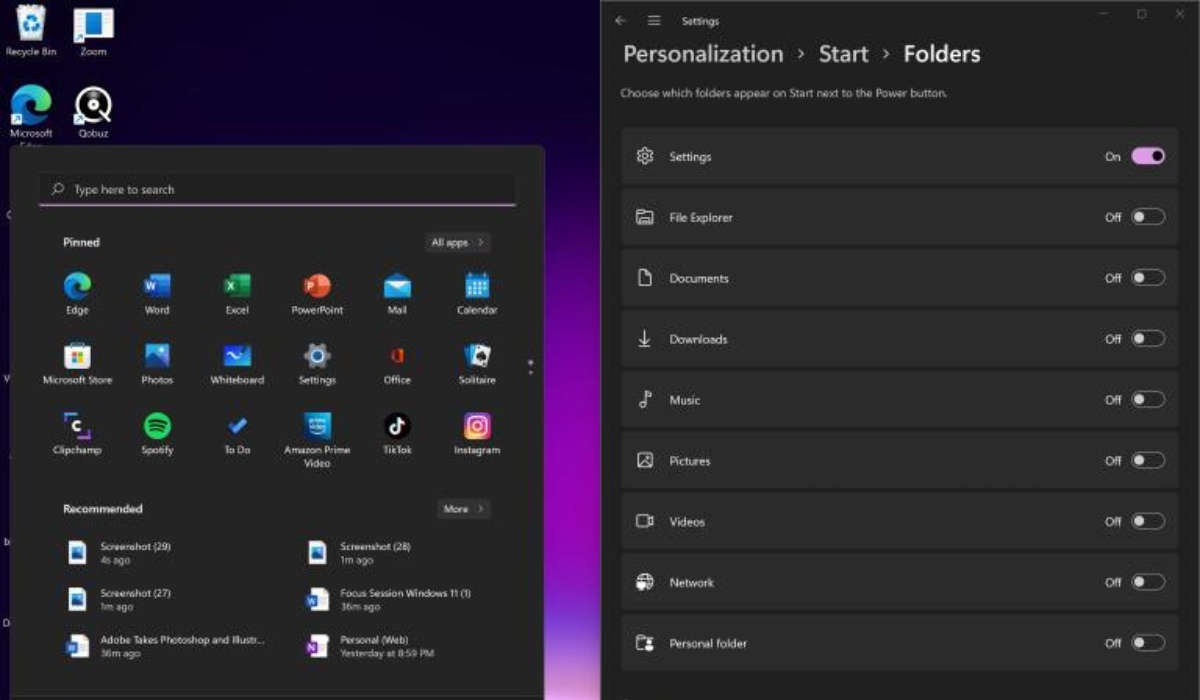
(Credit: Microsoft)
There are various contents that you can choose to show or hide in the Start menu. You can do this by opening Settings, then going to Personalization > Start, and using the toggle buttons to enable or disable items such as recently added apps, most used apps, and recently opened items. If you click on the “Folders” section, you can add shortcuts to different options, such as Settings, Explorer, or specific folders, by using the corresponding toggle buttons.
18. Turn On Windows Title Bar Shake
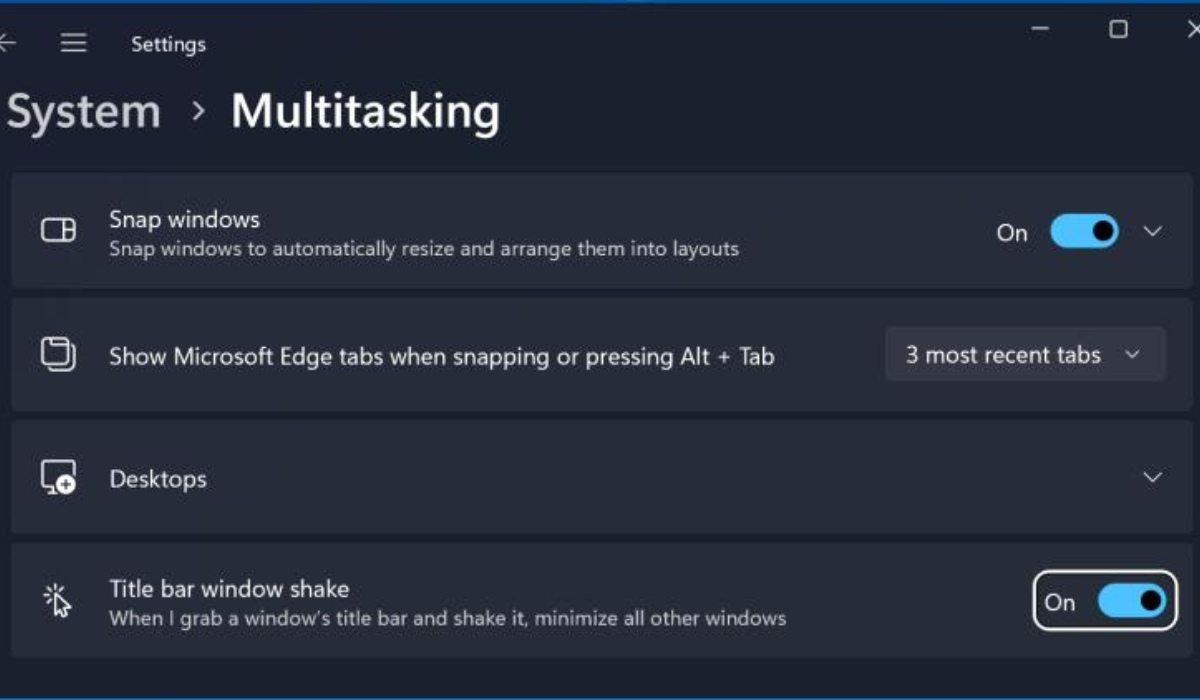
(Credit: Microsoft)
There is a setting that allows you to grab the title bar at the top of a window and shake it to close all other windows. We use this feature frequently to tidy up the screen, reduce clutter, and focus on the active window. You can also use the shortcut Windows + D to minimize all windows, but there is another option. To enable this feature, open Settings, navigate to System > Multitasking, and turn on the “Shake window title bar” toggle. Now, when you click on the title bar of an open window, hold down the left mouse button, and quickly shake it from side to side, all windows except the selected one will be minimized.
19. New Recording App
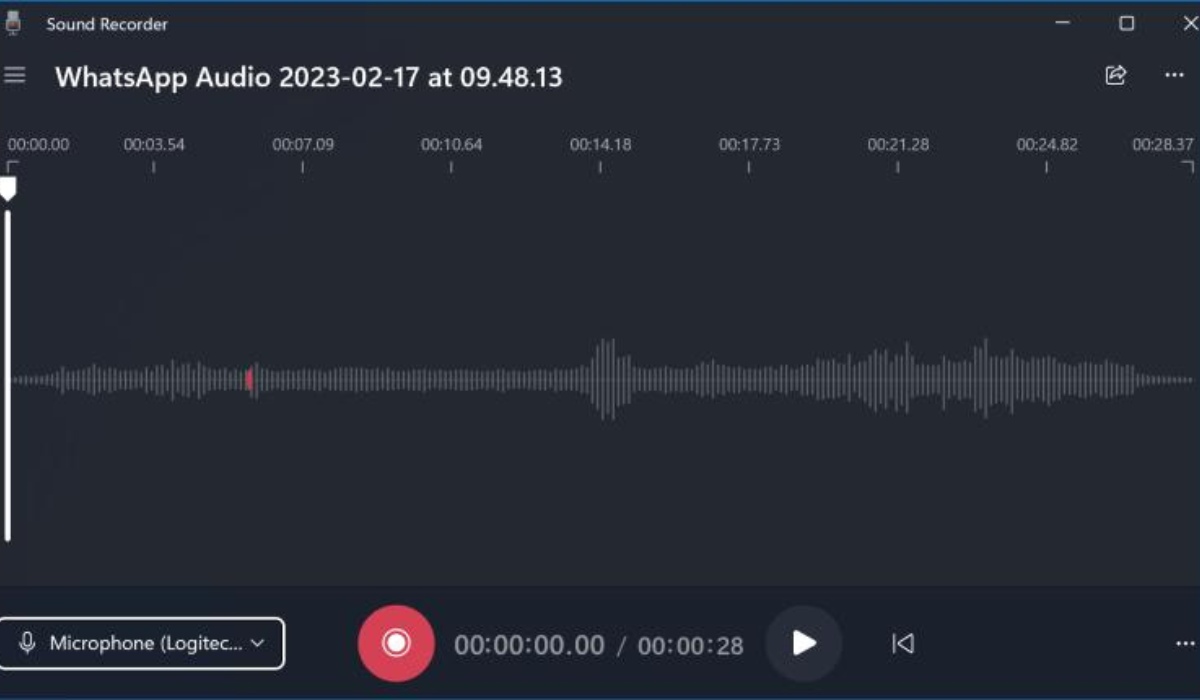
(Credit: Microsoft)
Instead of using Voice Recorder, users will utilize the new Sound Recorder. This application has been redesigned with a waveform display interface and integrates more input options compared to the previous version. This new Sound Recorder also provides the capability to export audio in various formats such as AAC, MP3, WMA, FLAC, and WAV. However, the passage also notes that despite these improvements, the application remains relatively basic and lacks the ability to cut audio.
20. Invoke The Game Bar
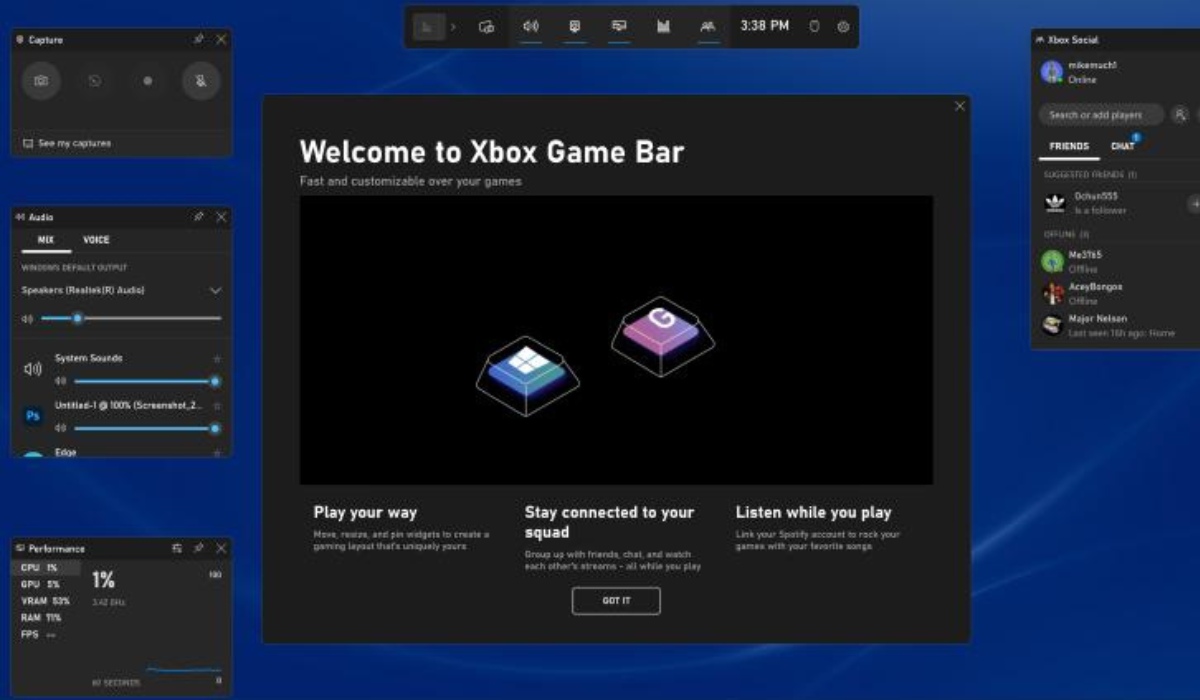
(Credit: Microsoft)
When you press the Windows + G key combination on the Windows 11 operating system, a series of useful utilities will appear, catering not only to gamers but also to all Windows 11 users. Specifically, these utilities allow users to record screen activities, check system resources and performance statistics. Additionally, it provides the capability to chat with friends who are gamers and view your personal Xbox Achievements. Moreover, Windows + G also offers audio and display settings, including HDR functionality. This creates a comprehensive and flexible experience for users, not only in the gaming entertainment domain but also in daily activities on the Windows 11 operating system.
21. Run Android Apps

(Credit: Microsoft)
Microsoft made an impression by announcing that Windows 11 would have the capability to run Android apps directly on the Windows system without the need for an Android phone. This is made possible through the Android subsystem for Windows and leveraging the Amazon AppStore to download Android apps. The process involves installing the Amazon AppStore from the Microsoft Store and configuring settings for the Android subsystem. Although the initial setup process is not as complex as one might think, it is described as happening more quickly.
The installation guide is outlined in three steps, guiding users through the process and requiring a system restart. To execute this process, users need an Amazon account. A particularly positive aspect is seeing the app icons on the taskbar resembling standard Windows apps after installation. This is especially useful for apps with limited features when used on mobile devices, for example, the TikTok Windows app, which does not allow direct webcam posting from a PC, while the Android version has the capability to do so.
22. Get Used To The New Touch Gestures
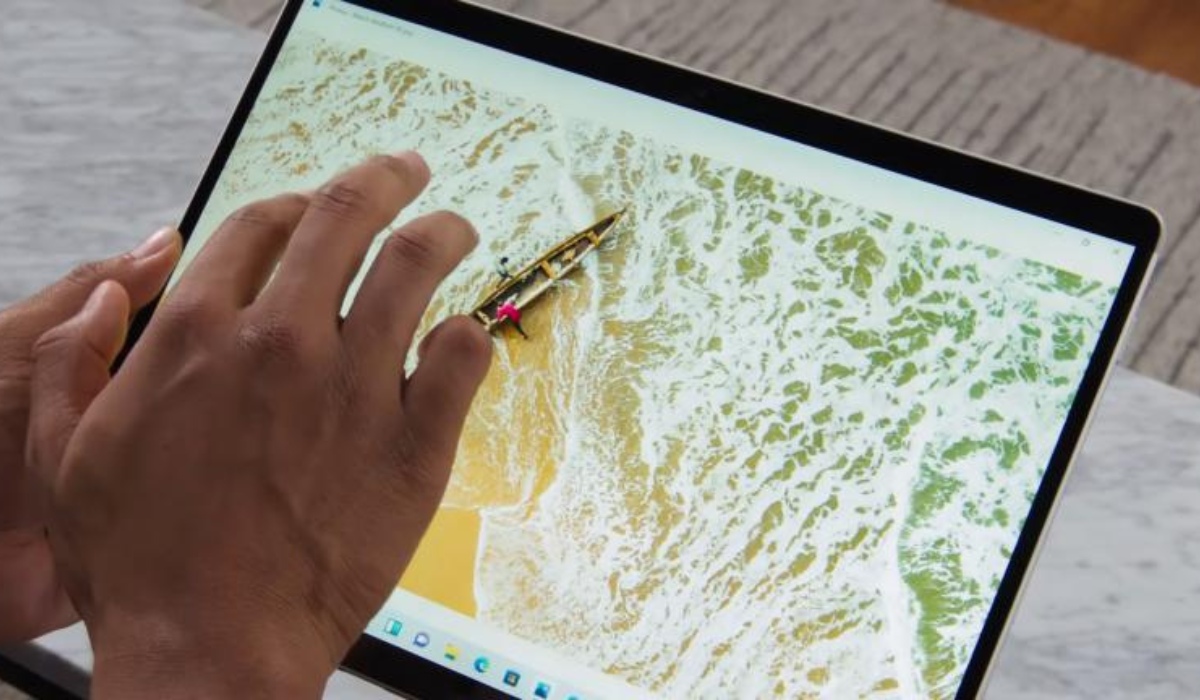
(Credit: Microsoft)
If you are using a tablet or a touchscreen computer, you need to familiarize yourself with a range of new touch gestures, many of which involve using multiple fingers. Specifically, swiping from the left no longer opens the task switching mode; instead, it reveals a Widget board containing news and information. To display the Task View, users must swipe up on the screen with four fingers. Swiping from the right can still open notifications. Swiping down from the top no longer closes the application; instead, users can swipe down within the app window with three fingers to minimize the app and display the background. Swiping up with three fingers opens all currently running windows. This illustrates how touch gestures are used to perform various tasks on the touchscreen of a tablet or computer.
23. Check Battery Usage
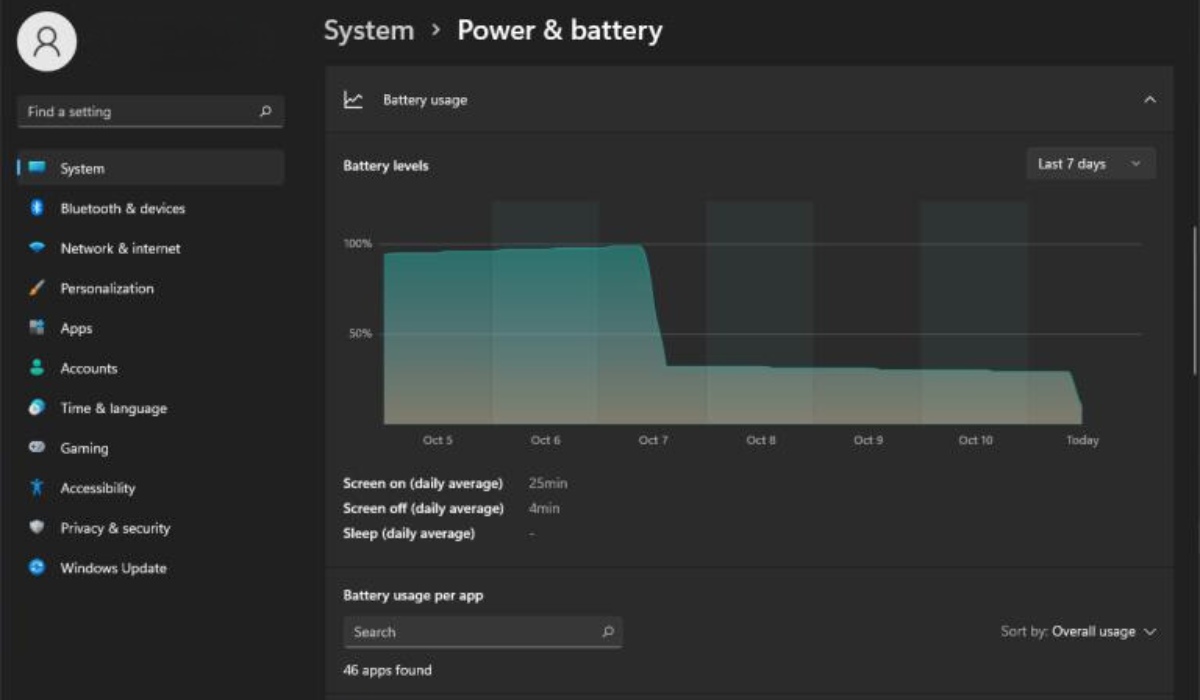
(Credit: Microsoft)
Users are encouraged to check and manage battery usage by accessing the Settings menu and selecting System > Power & battery when running on battery power.
By clicking on “View detailed info” alongside the battery usage graph, users can see a list of apps consuming battery. This helps them identify and close any unnecessary apps or manage their background activity through the three-dot menu next to the app’s entry in the list. This guide aims to assist users in making informed decisions about app management, thereby optimizing and extending battery life when using a laptop without being plugged in.
24. Choose Your Theme
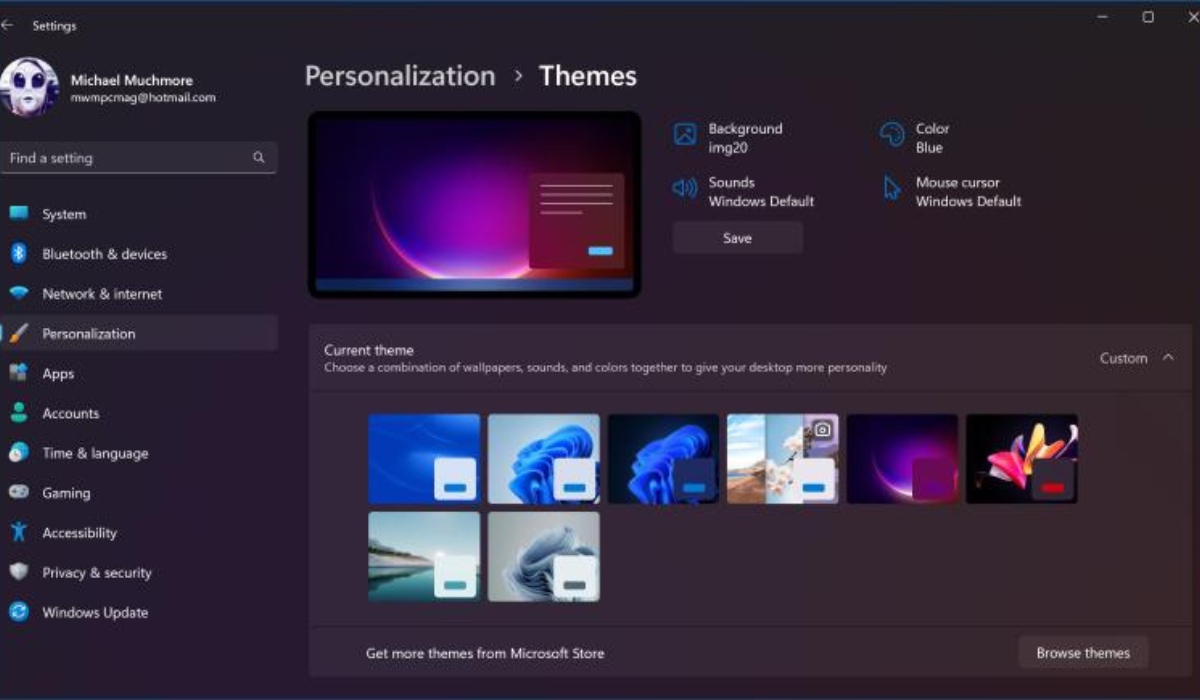
(Credit: Microsoft)
Themes will make a comeback in Windows 11, but this time they will operate concurrently with the dark mode. To achieve this, users can navigate to Settings > Personalization and choose one of the default themes to simultaneously change the wallpaper, sounds, cursor, accent color, and color theme. Additionally, they can open the Themes section to edit the current theme, add new themes from the Microsoft Store, or create their own themes. This provides users with the ability to customize and alter the system’s interface according to their preferences, enhancing the personalization experience on Windows 11.
25. Get Better Recommendations
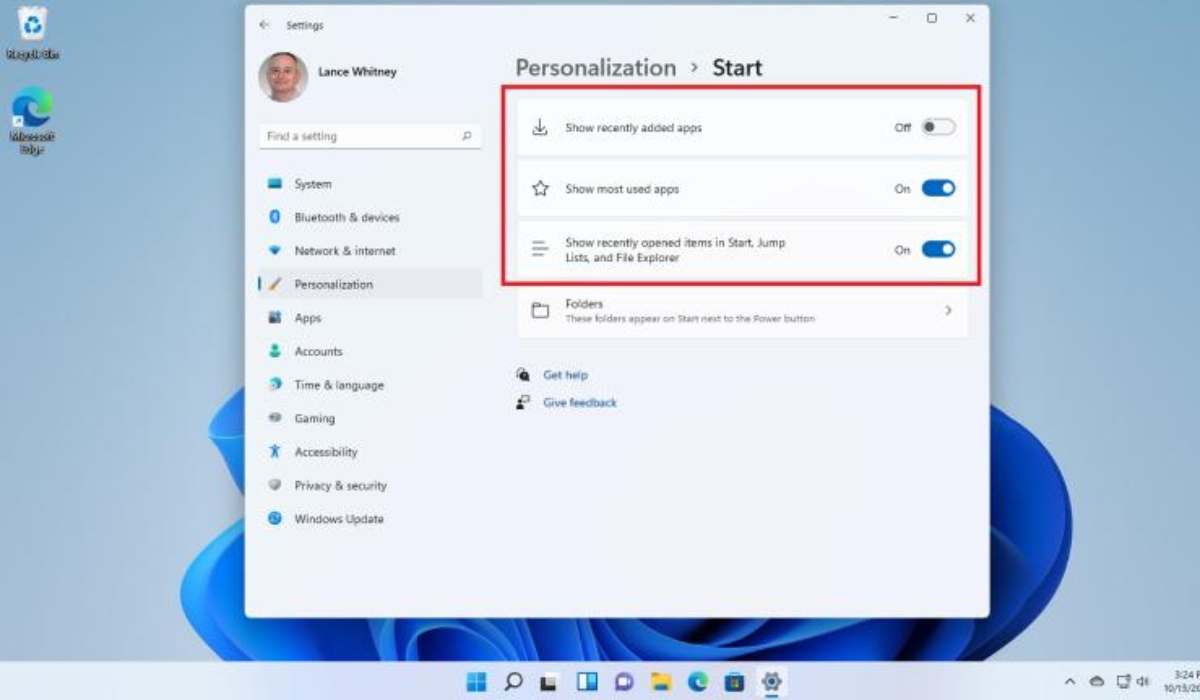
(Credit: Microsoft)
The new Start Menu in Windows 11 contains a section called “Recommended,” displaying recently accessed files and frequently used applications. To customize the content appearing here, users can navigate to Settings > Personalization > Start. Here, they can instruct Windows to stop showing recently installed apps, frequently used apps, or recently opened items in the Start menu, the App list, and other locations. This provides flexibility for users to manage and fine-tune the displayed content in the Start Menu according to their personal preferences.
Conclusion
With new features, Windows 11 proves to be a powerful release. Depending on the Windows version you were using before, adjusting to the new operating system may be challenging. All in all, it’s a significant improvement over Windows 10 that takes that recipe and refines it even further. To enhance your experience and get the most of the OS, adhere to the aforementioned advice. Thank you for reading this article about Windows 11 tips and tricks; please read more informative articles!
